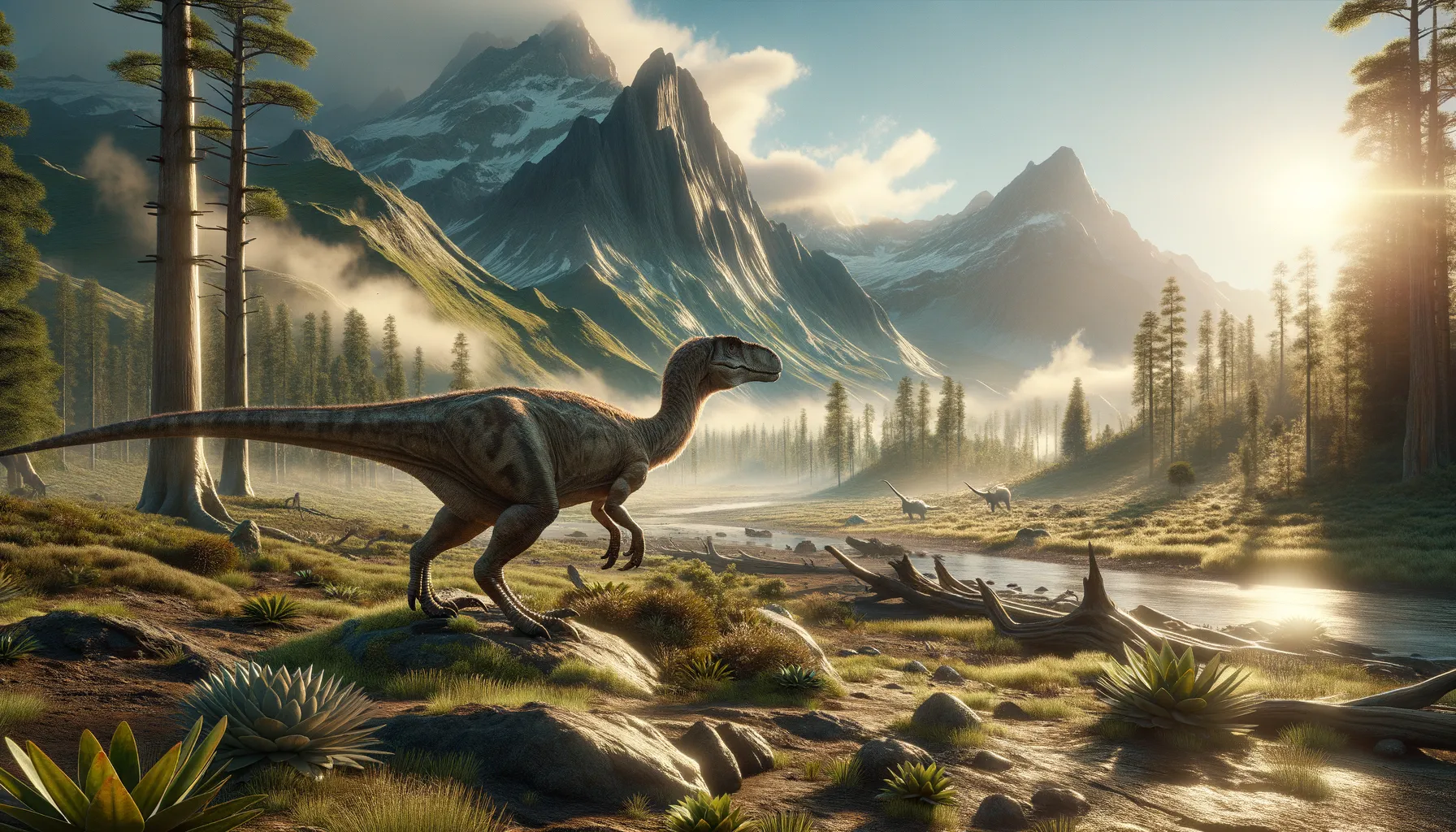
Anabisetia
Swift on its feet, conquering the Cretaceous!
Period
Cretaceous
Length
Around 2 meters from head to tail.
Height
Roughly 1 meter tall at the hips.
Weight
Approximately 25 to 35 kilograms.
Anabisetia was a small, agile herbivorous dinosaur that roamed the earth during the Cretaceous period. Known for its bipedal stance, it could move quickly to escape predators. Despite being relatively small, it had a robust build with a strong tail for balance. Its fossilized remains help paleontologists understand more about the diversity of life during its time.
Diet
Anabisetia was herbivorous, feeding on low-lying plants. It likely used its beak-like mouth to clip vegetation. Its diet probably consisted of ferns, cycads, and other prehistoric flora available during its era.
Hunting
As a herbivore, Anabisetia did not hunt for meat. It foraged for plant matter. Its small size and agility helped it to quickly find food while avoiding predators.
Environmental challenges
Anabisetia lived in a diverse environment with changing landscapes due to tectonic activities. Finding enough food could have been challenging, especially during drought periods or seasonal changes. Predation by larger carnivores would have posed constant threats, requiring vigilance and speed for survival.
Speed
Moderately fast for a dinosaur of its size.
Lifespan
Estimated around 10 to 15 years.
First discovery
Discovered in Argentina in the early 2000s.
Fun Facts
- Anabisetia was a small plant-eating dinosaur that lived about 90 million years ago in what is now South America.
- This dinosaur was named after the Argentine paleontologist, Analia Forasiepi, and its fossils were first discovered in Argentina.
- Anabisetia was part of a group of dinosaurs known as ornithopods, which were famous for their ability to move quickly and efficiently on two legs.
- Despite being small, Anabisetia likely used its speed as a primary defense mechanism against predators.
- The bones of Anabisetia gave scientists valuable insights into how certain dinosaurs balanced their bodies while running.
- Fossils of Anabisetia include well-preserved skulls and limb bones, which help paleontologists understand its feeding habits and locomotion.
- Anabisetia lived in a landscape filled with rivers and greenery, offering it a lush environment to graze and roam.
Growth and Development
Anabisetia likely hatched from eggs, taking several years to reach maturity. Growth rates would depend on environmental conditions and food availability. As it matured, it would develop stronger limbs and a more robust body, aiding in its survival.
Habitat
It inhabited areas rich in vegetation, such as forests and open plains. The environment was warm, supporting an abundant plant life which sustained its herbivorous diet. Seasonal variations would influence food supply and living conditions.
Interaction with other species
Anabisetia coexisted with a variety of other dinosaur species, both herbivorous and carnivorous. It may have traveled in groups for protection against predators. Mutualistic relationships with other species could have existed, such as birds that helped remove parasites.
Natural lifespan
Anabisetia naturally lived around 10 to 15 years.
Reproduction
Anabisetia reproduced by laying eggs, likely in nests made in secluded areas. Parental care was minimal, with young ones mostly fending for themselves after hatching. Clutch sizes and nesting behaviors remain speculative due to limited fossil records.
Social behaviour
Anabisetia might have exhibited some social behavior, such as grouping together for protection against threats. Communication could include vocalizations or visual signals. Interaction with peers likely revolved around food search and danger avoidance.
Fossil locations
Fossil remains of Anabisetia have been found in Argentina, particularly in the Neuquén Basin. This region is rich in fossil sites, providing insights into the Cretaceous ecosystems. Discoveries here contribute significantly to the understanding of South American dinosaur fauna during that time.
